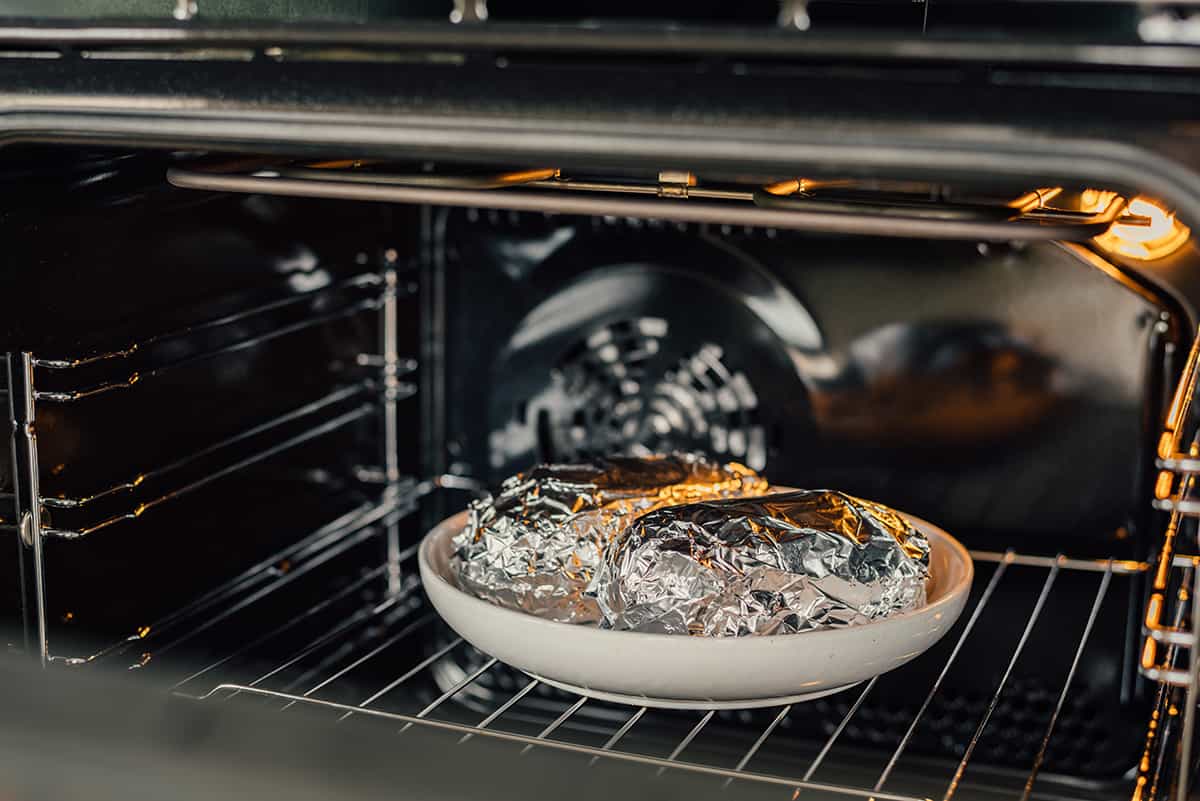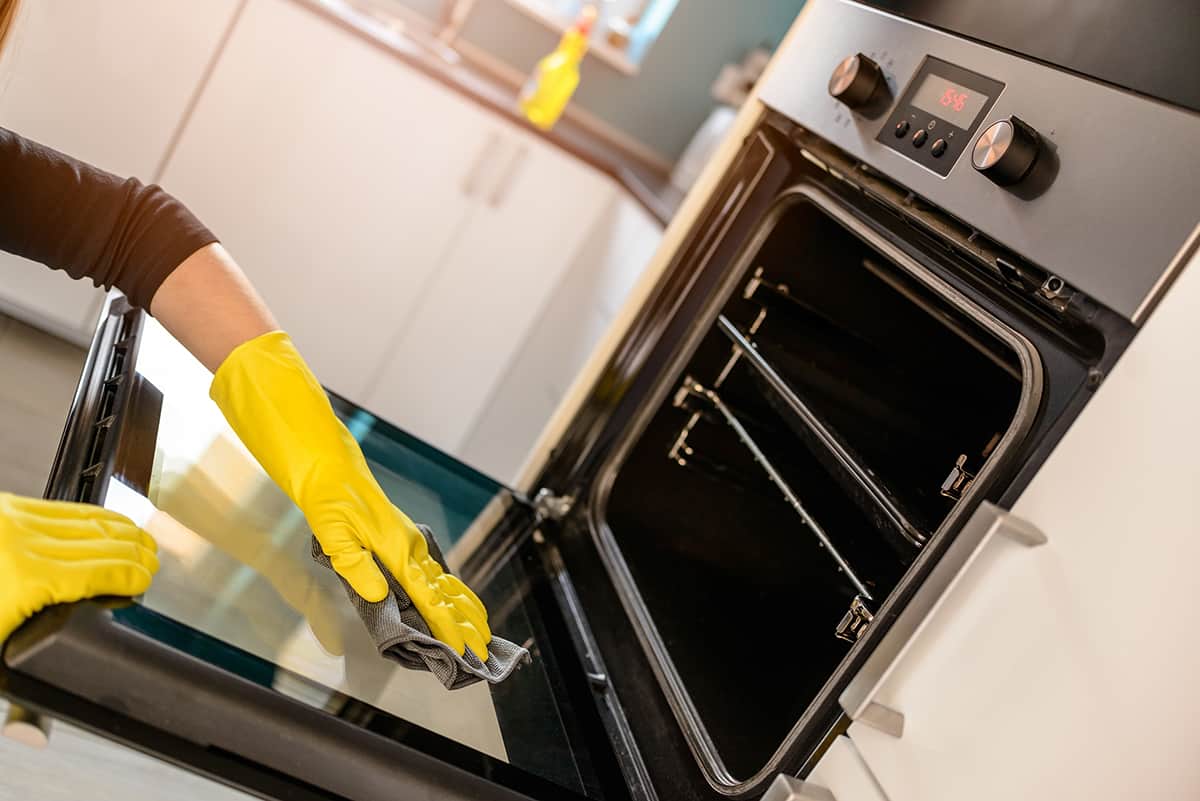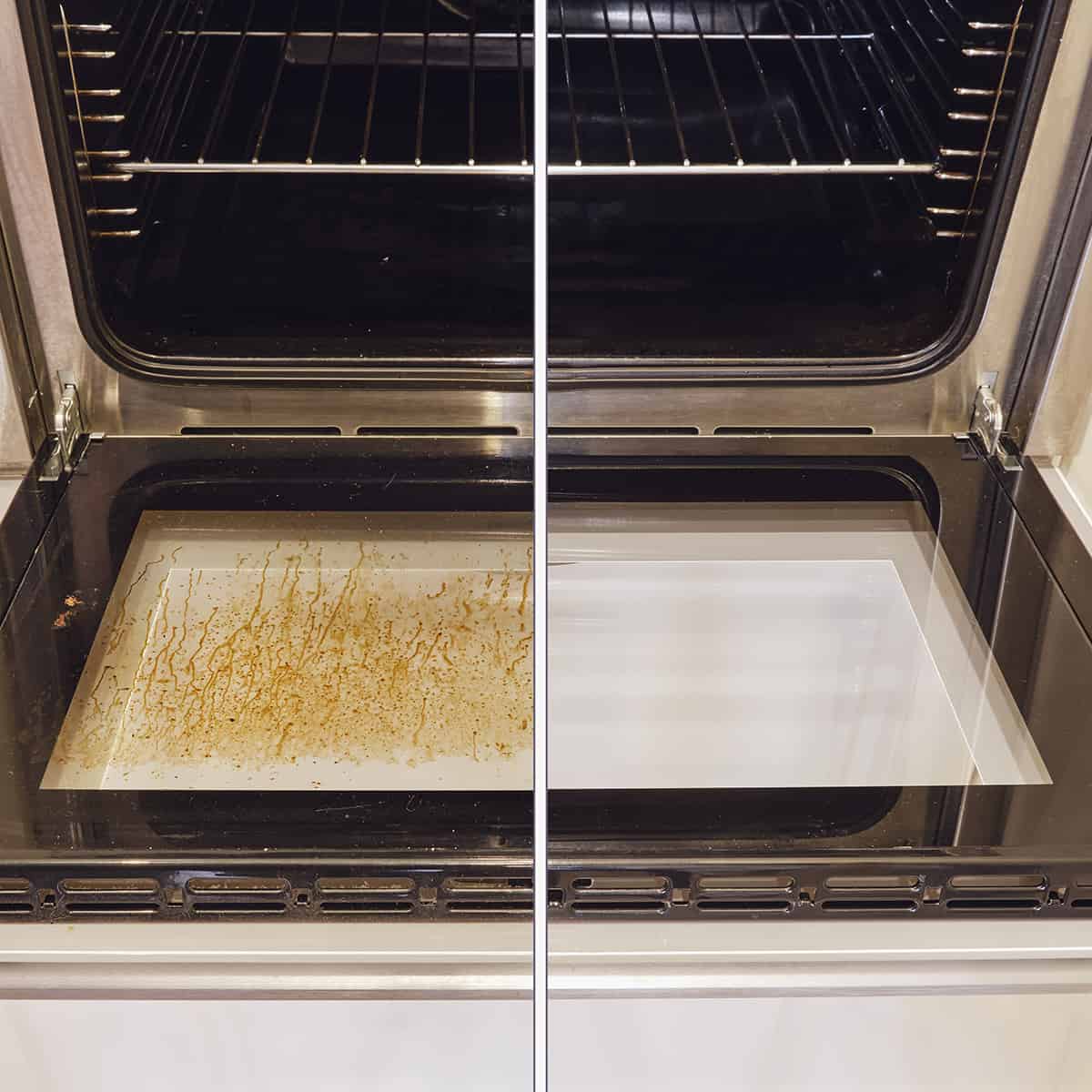Ovens are an essential part of any kitchen, helping us cook delicious meals for ourselves and our loved ones. However, keeping them clean can sometimes be a challenge. When we cook, food particles, grease, and other residue can build up inside the oven, affecting its performance and even causing unpleasant odors.
To prevent your oven from getting dirty, you can:
- Use the right cookware
- Use oven liners and drip trays
- Utilize foil and parchment paper
- Practice smart cooking techniques
In this article, we will explore these tips in greater detail, along with additional strategies for maintaining a clean oven.
Cookware Considerations
Choosing the right cookware plays a big role in keeping your oven clean. Using suitable materials and designs can help prevent spills and splatters, making it easier to maintain a spotless oven.
Selecting the best materials for oven use
Certain materials are better suited for oven use than others. Glass, ceramic, and metal are all great choices because they can handle high temperatures and are easy to clean. Avoid using plastic containers, as they can melt and create a mess.
When choosing metal pans, opt for non-stick or coated varieties to prevent food from sticking and creating hard-to-clean residue.
The role of high-sided baking dishes and trays
High-sided baking dishes and trays can help catch spills and splatters before they reach the oven’s interior. When cooking foods that tend to bubble or release liquids, such as casseroles or lasagna, using a dish with raised edges can prevent overflow. Similarly, when roasting meats, opt for a tray with a lip to catch any excess grease or juices.
Oven Protection Accessories
Oven protection accessories can help keep your oven clean and make cleanup easier.
Harnessing the power of oven liners
Oven liners are thin, heat-resistant sheets that can be placed at the bottom of your oven. They catch spills, drips, and crumbs, making cleanup a breeze. Be sure to choose a liner that is compatible with your oven type and follow the manufacturer’s instructions for use.
Mastering the use of drip-catching trays
Drip-catching trays can be placed beneath your cookware to catch any spills or drips. When using these trays, ensure that they are oven-safe and large enough to accommodate any overflow from the dish above.
Foil and Parchment Paper Best Practices

In this section, we will discuss how to use these materials effectively to maintain a clean oven.
Aluminum foil: the dos and don’ts
Aluminum foil is a versatile and useful kitchen tool, but it’s essential to use it correctly to ensure a clean oven and well-cooked food. Here’s a list of dos and don’ts to help you make the most of aluminum foil.
Dos
- Line baking sheets and pans—Use aluminum foil to line baking sheets and pans when roasting or baking. This can help catch drippings and prevent food from sticking, making cleanup easier.
- Cover dishes—When cooking dishes that may bubble over, cover them with foil to contain any spills. Just make sure to leave enough space between the food and the foil to allow for steam circulation.
- Tent meat for even cooking—Tenting foil over meat, while it’s resting, can help keep it warm and allow the juices to redistribute evenly, improving the taste and texture of the final dish.
- Wrap food for storage—Foil is an excellent choice for wrapping and storing leftovers, as it creates a tight seal that helps retain freshness and flavor.
- Grill with foil packets—Create foil packets to cook vegetables or delicate proteins on the grill. This method helps retain moisture, flavor, and nutrients while also preventing sticking and reducing cleanup.
Don’ts
- Don’t cover oven floor or racks—Avoid lining the oven floor or racks with foil, as it can disrupt heat circulation, cause uneven cooking, and even lead to a fire hazard.
- Don’t use with acidic foods—Acidic foods, like tomatoes or citrus, can react with aluminum foil, causing the foil to deteriorate and the food to absorb aluminum. Use parchment paper or glass containers for these items instead.
- Don’t reuse foil multiple times—While it might be tempting to reuse foil, doing so can increase the risk of contamination, especially when it has been in contact with raw meat. It’s best to use a fresh piece of foil each time.
Parchment paper: the unsung hero of clean ovens
Parchment paper is a non-stick, heat-resistant material that can be used to line baking sheets or pans. It prevents food from sticking and makes cleanup simple. Opt for parchment paper instead of foil whenever possible to reduce waste and promote even cooking.
Cooking Methods for Minimal Mess
Choosing cooking methods that reduce mess can help keep your oven clean.
Splatter-free roasting techniques
When roasting meats, use a roasting rack to elevate the meat above the pan. This allows air to circulate around the meat and helps to contain drippings in the pan below, minimizing splatters.
The beauty of low-temperature cooking
Low-temperature cooking methods, such as slow roasting or braising, can help prevent messes in your oven. These methods require longer cooking times but produce less splatter and reduce the risk of spills or overflows.
Routine Oven Maintenance

Maintaining a clean oven is crucial for both its performance and the quality of the food you cook. Regularly cleaning your oven can help prevent unpleasant odors, reduce the risk of smoke, and extend the life of your appliance.
In this section, we will discuss the importance of routine oven maintenance and provide practical tips for quick and effective cleaning.
The significance of regular oven upkeep
A clean oven not only looks better but also functions more efficiently and produces better-tasting food. Regular cleaning helps to remove grease, food particles, and other residue that can affect its performance.
Staying on top of oven maintenance can also prevent more difficult and time-consuming cleaning tasks later on. Moreover, a clean oven reduces the risk of smoke and potential fire hazards caused by the buildup of grease and food debris.
Speedy and effective oven-cleaning hacks
To make oven cleaning more manageable, try these simple hacks that can save time and effort:
- Wipe down after every use—Get into the habit of wiping down the oven interior after each use, once it has cooled down. Use a damp cloth or sponge to remove any spills or splatters, preventing them from becoming baked-on and difficult to remove.
- Use a vinegar solution—Mix equal parts white vinegar and water in a spray bottle. Spray the solution onto the oven’s surfaces and let it sit for a few minutes before wiping it away. This natural cleaner is effective at cutting through grease and grime.
- Steam clean with baking soda and water—Create a paste with equal parts baking soda and water, and apply it to the oven surfaces. Let the paste sit for at least 15 minutes, then use a damp cloth to wipe it away. The baking soda will help to break down stubborn stains.
- Clean oven racks separately—Remove the oven racks and soak them in hot, soapy water for at least 30 minutes to loosen the grime. Scrub the racks with a brush or sponge, then rinse and dry them before returning them to the oven.
- Utilize the self-cleaning feature—If your oven has a self-cleaning function, use it according to the manufacturer’s instructions. The self-cleaning feature typically heats the oven to a very high temperature, turning residue into ash that can be easily wiped away.
- Schedule regular deep cleans—Set aside time every few months for a thorough oven cleaning. This will help to maintain its performance and ensure that it remains a safe and efficient cooking tool.






